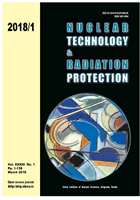
DELINEATION OF RADIONUCLIDE BIOACCUMULATION IN GOLDEN HORN, ISTANBUL, USING BIOINDICATOR MUSSEL Passive Monitoring and Transplantation
Pages: 125-132
Authors: Onder Kilic, Murat Belivermis, Narin Sezer, and Gulsah KalayciAbstract
The Golden Horn estuary in the centre of Istanbul, has been exposed to many pollutants from domestic and industrial waste effluent during the second half of the 20th century. In this study, Mediterranean mussel (Mytilus galloprovincialis) was seasonally collected from eight sites in the Golden Horn estuary, Istanbul to determine the bioaccumulation of 137Cs, 40K, 210Po, and 210Pb between 2013 and 2014. The averages activity concentrations of 137Cs, 40K, 210Po, and 210Pb were determined to be 1.36, 463, 91.64, and 11.51 Bqkg-1 at dry weight, respectively. Mussel samples were also transplanted between the middle and lower part of the estuary to investigate variations in the levels of radionuclides over the course of the year. Higher concentrations were observed except for 210Po, compared with their initial concentrations in the transplanted mussels. Besides, the average and range annual effective ingestion dose values were calculated to be 11.96 and 2.23-34.45 µSv due to 210Po through consumption of mussels from the Golden Horn. According to obtained dose levels, there is no health risk in terms of 210Po consumption of mussels.
Key words: Mytilus galloprovincialis, mussel transplantation, radionuclide, Golden Horn estuary
FULL PAPER IN PDF FORMAT (909 KB)
